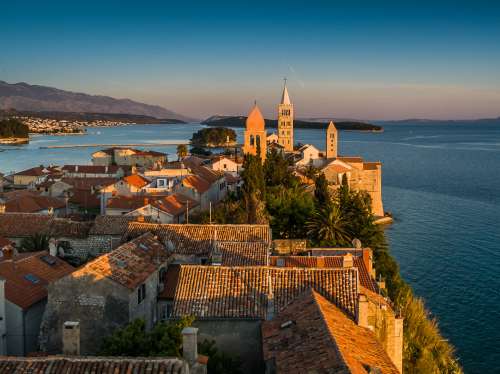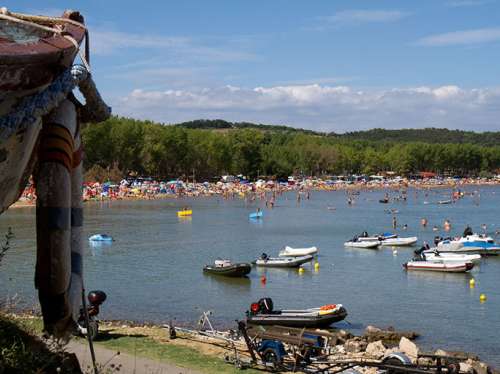Barbat is the first settlement which you will encounter upon arrival at the ferry terminal located in rocky and inhospitable looking Mišnjak. Numerous holiday homes are strung out along the coastline. Here the modern and traditional blend together: notwithstanding lucrative tourist related incomes, many families have not deserted the old way of life, continuing to cultivate agricultural land and vineyards, honey production and fishing. Many of these products, considered to be amongst the best on the island, are served to guests. Proximity to the sea, numerous bays and inlets for swimming, Dolin Island which is located directly opposite the settlement thereby protecting Barbat channel from cold winds and storms, are surely just some of the reasons why many guests and sailors chose to return year after year.
Barbat is the southernmost village on the island and it is situated along the sea belt of the Barbatski Kanal and the slopes of mount Kamenjak. Very old settlements existed here which are revealed by the ruins of various buildings. The settlement was an old hill-fort and the small church of St Damion. Legend says that these ruins date from Greek times and that the Greeks from Sicily established here a military colony in the 4th century B.C. It also says that during a battle of that time blood and wine flew to the sea. Some sources say that the ruins on the mount of St Damion might be the remnants of the ancient town of Ptolemy's Kolenta. At low tide one can notice in the shallows, near the hamlet of Percinic, the remnants of the town which was supposedly founded by refugees who escaped from Attila onto the island of Rab. Today's church of St Stephen at Postrana was built on the site where the Benedictine monastery of St Stephen was erected in 1372. The monks left the monastery in the 15th C, while the canons of St John the Lateran were given the monastery goods for their enjoyment in the 16th C. There is an interesting sarcophagus from the 6th C near the church. A crucifix painted on wood, most probably the work of a master from the old Italian school is kept in the church.








